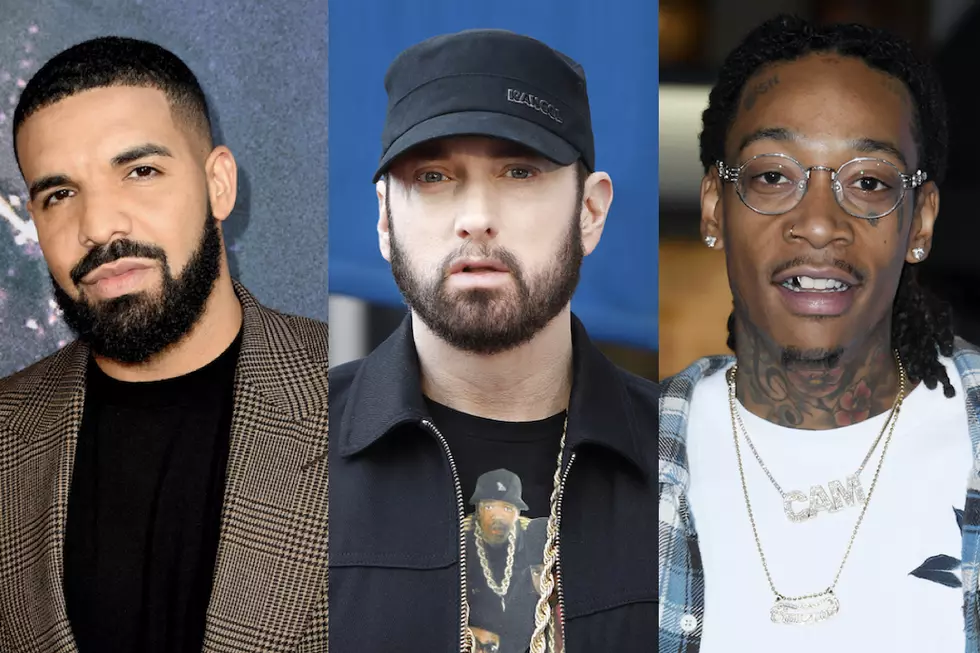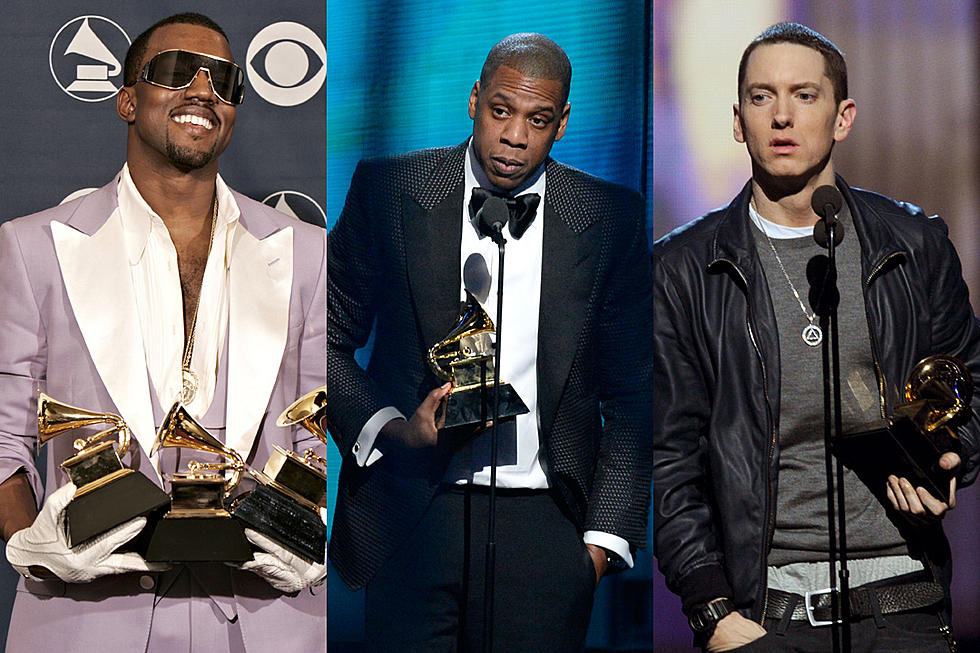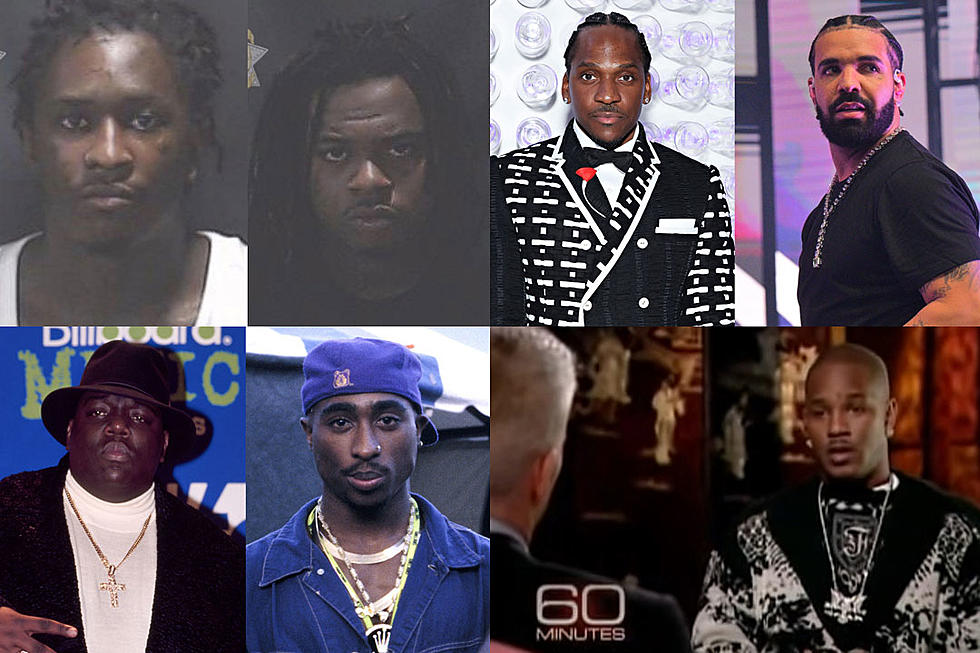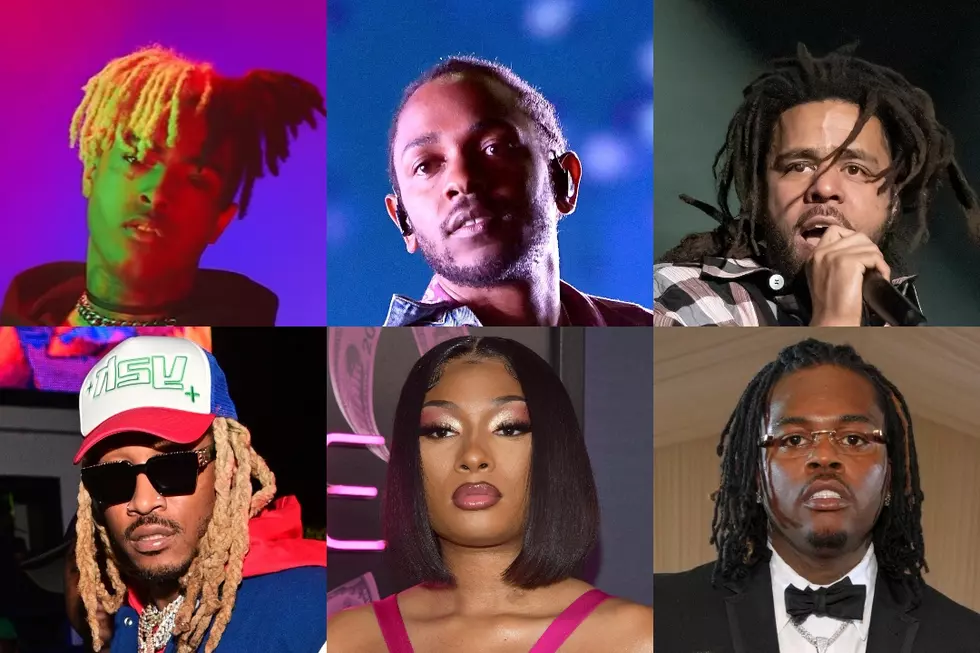
Macklemore, “F.A.M.E.” (Originally Published May/June 2013)
Macklemore Was Labeled The Most Obscure Pick For XXL’s Freshman Class Last Year, But He Wound Up Proving All The Haters Wrong. Really Wrong.
Words Kris Ex
Images Chris Shonting
There was that one time when a homeless guy jacked them for some merchandise, Ryan Lewis is explaining. About three years ago, Lewis and his partner, Ben “Macklemore” Haggerty, set up their headquarters in North Seattle, in a neighborhood known for big box stores, prostitution, motels, a casino and a cemetery. “It’s a really interesting place to be posted up for a long time,” says Lewis, a Spokane native, taking a pull from a USB-charged e-cigarette attached to his laptop computer. Wearing a cut-off denim vest over a sweater, he could pass for one of the co-eds at tonight’s venue, Occidental College—a private liberal arts college in Los Angeles with a 10:1 student-faculty ratio. He’s in a trophy room that may very well be bigger than the space he’s talking about; the large wood conference table before him is littered with jams, hummus, fruit, coconut water, Ezekiel bread, organic popcorn and computers, tablets, chargers, wires; Jansport backpacks, rolling and carry-on luggage is all over the room. Though their business—registered as Macklemore LLC, billed as “Macklemore & Ryan Lewis,” created for the sole purpose of controlling their own music careers—has outgrown the Seattle studio, they’ve been too busy to move out, mostly because they handle just about everything themselves.
(“It’s weird calling it a label, because it isn’t really a label,” says Lewis. “But at the same time, if you look at it on paper, we are pretty much an independent label. We’re being distributed through [Alternative Distribution Alliance]; who are ADA’s other clients? Not artists, [but] small independent labels.”)
At 25, Lewis not only produces, engineers and mixes all of Macklemore’s music, he co-directs and edits most of their videos, and handles much of their graphic design. The Seattle studio they currently work out of is only 500 square feet, but it had met their requirements when they got it. First, it was cheap; second, they could make a lot of noise there. They recorded vocal tracks in there, they packaged and shipped CD’s from there, they had huge shipping containers in the front where they kept the wares they sold at performances.
One night, at about 2 a.m., Lewis heard what he thought was a raccoon shifting through the containers. It turned out to be a homeless man, claiming he was looking for someplace to roll a cigarette. Ryan checked the guy out and sent him on his way. The next day, Tricia Davis, their product manager (who’s also Macklemore’s fiancée, who also runs their merch table at shows, who also sometimes serves as the press contact for interviews) discovered that about a dozen specialized sweatshirts were missing. “He got us,” laughs Ryan. “I think he was wearing it under his coat because he was bundled up. It’s hilarious that he jacked the ‘Macklemore Loves Minneapolis’ hoodies that we probably weren’t going to be able to sell anyway.”
Back then, Macklemore and Ryan Lewis had a handful of reliable markets they could revisit as performers. At least once, they wound up in Alaska, more often they would be in a room with maybe 20 people staring them in the eyes. But their fanbase had been growing and spreading beyond their Seattle grounds. Though they had released The Vs. EP (2009), their strategy was “putting an immense amount of time into content until it’s very good as opposed to just putting out a shit-ton of content,” Lewis explains. They would invest a lot of time into their music videos and play the singles game. “Going back and working on a song for two weeks, three weeks, four weeks, two months until it’s something that, once it’s out, it’s something we’re gonna be proud of for a long time has always made way more sense for how we’re wired than just cranking out mixtapes,” Lewis admits.
One of the songs they spent some time on was “Thrift Shop.” Before going on to break numerous performance records, topping worldwide charts and selling millions of records, “Thrift Shop” was a vocal performance tracked to drums that Ryan tried about eight different soundscapes on. The beats were either too clubby, too serious, or too sinister for the subject matter, until he found a collection of sample-based horns for a Pro Tools plug-in. He played out a saxophone performance on his keyboard, liked it and built out the song. “But neither of us thought it was going to end up being, like, a single,” he says. “By any means.” When Macklemore and Ryan Lewis released their debut album, The Heist last year, there was little attention, if any, placed on a seemingly throwaway track like “Thrift Shop.” The album, easily one of the most accomplished releases of 2012, was chock- full of possible hits and heady topics in equal measure—high concept send-ups of the sneaker industrial complex, major label revenge fantasies, and transparent admissions of drug relapse hung next to a Lonely Island-ish song that dropped an involved Chronicles of Narnia metaphor and a hook about “unicorns and wizard sleeves, Hammer pants and make believe, pirate ships sailing off to sea.” Many of the group’s Seattle fanbase had pegged the album’s “Gold” as the breakout hit. The group themselves had been pushing “Can’t Hold Us;” Ellen Degeneres had latched onto “Same Love,” a moving meditation on gay rights. But it was the song with a line about R. Kelly’s urine- stained sheets that broke.
“I’m a backpacker,” stresses Macklemore, aware of the absurdity of his situation, while preparing for the Occidental show. He’s wearing a casual blue dress shirt, washed-out torn jeans and Nike dunks. He wears two small chains with pendants and a $200 Michael Kors watch; four rings, which he picked up at various mall kiosks across the country, are on his right hand. He still flies on Southwest Airlines. “I went four times Platinum on a song about second-hand clothes.”
As part of a high school graphic arts class assignment, Ben Haggerty was given a superhero figure with neither logo nor name. He named his hero Professor Macklemore, apropos of nothing save for “something from the vaults of bottled-up creativity.” When he went to New York the following summer, he would wear mismatched outfi ts from the thrift store—plaids and fringes and denim and oversized hats. He had a fake ID so he would get drunk as a teen. He called this drunken character Professor Macklemore, just because. At 17, Ben released his fi rst album, Open Your Eyes, as Professor Macklemore. The first track on the 2000 album is called “Welcome to the Culture” and begins: “In life’s ever-going symphony/I orchestrate my music willingly/Making moves, making history/Mentally we’re manipulated by the music industry/It’s time for chivalry, creativity lyrically/… For it’s evident that the dead president is taking our culture out of its element.” Says Macklemore, “I was just trying to figure out who I was and experiment with tonality and cadences.”
It was 2005’s Language of My World that showcased the Macklemore that is on record today—focused song concepts with earnest sermonizing where he treats huge ideas personally, polemicizes intimate issues. There’s a silly but serious song about wishing he had a bigger dick; “Inhale Deep” where he plays with Buddhist concepts and admits to fearbased drug addiction; “Ego,” where he talks about hating on his peers that signed record deals— “And that’s hard to admit/but since I’m really being honest/I wanted to be one of the first to make it as a Northwest rap artist/ Instead of taking it as a plus for my region, I took it as cut to my dreams.” On “White Privilege” he takes himself to task, noting “Most Whites don’t want to admit this is occurring/’Cause we got the best deal: The music without the burden/Of being Black in a system that really wants you to rot/Because all you need is a program and you can go and make hip-hop.”
Many of Macklemore’s detractors (who are overwhelmingly White; Black people still don’t pay too much attention to him) write him off as sounding like Slug of Atmosphere, but it’s a lazy and sinister comparison—said à la Guerrilla Black, somehow assigning him as a biter. While there are similarities in the older work, the newer work would be more reminiscent of Rhode Island’s Sage Francis. But only to a point. Which is all to say that Macklemore sounds like what he is—a White underground rapper who steers past revivalist pedantry and shock value. Until now, the credible White rappers that have cracked into mainstream hip-hop’s awareness have mimicked, catered to and paid homage to Black culture; a handful have portrayed themselves as ethnic hicks. But Macklemore is the first commercially successful White rapper who’s just a regular White guy.
“The gatekeepers—the people that are probably close to my age, that are my same skin tone—that threatens them in a certain way,” observes Macklemore. “If I wasn’t in my position and I was them, or I was another MC, I would feel threatened, too. The culture that we know and love that is a certain thing, that’s a certain era, it’s a certain person, it’s a certain sound, it’s a certain texture, it’s a certain city, it’s a certain look, it’s a certain style of dress. That becomes threatened. When you see a line of 2,000 kids in some private school in California waiting to get into a Macklemore show, you know that the majority of those kids have not grown up listening to hip-hop. That this White kid that’s rapping about thrift shops is one of the most popular rappers in the country, the thing that you love the most you feel like, maybe this is being compromised. The Pandora’s Box is opened and now it’s not just mine anymore and this is not what hip-hop represents to me.”
More From XXL









